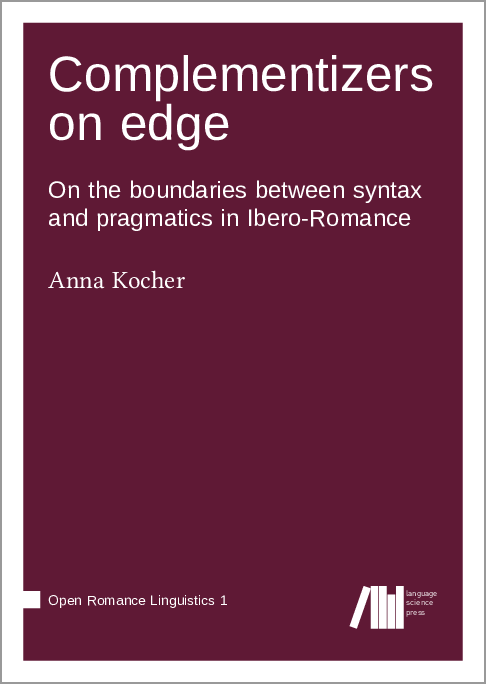In der letzten Zeit sind u.a. diese frei verfügbaren Titel erschienen:
Questions in context: The case of French wh-in-situ
Aliza Glasbergen-Plas
https://hdl.handle.net/1887/3239072
This dissertation investigates the properties of a particular type of question, namely wh-in-situ questions in French. It examines their properties from two perspectives related to the context in which a question is uttered. These are (a) the information structure of the sentence, specifically focus and givenness, and (b) the distinction between regular information seeking questions and echo questions.An important result is the insight that French has two mechanisms to interpret wh-in-situ questions, yielding potentially identical looking questions with different properties. While certain speakers only have one of these mechanisms to interpret wh-in-situ questions in their grammar, others, often younger speakers, have both. This explains much of the data confusion regarding the properties of French wh-in-situ questions.The investigation also provides more general insights into the relation between wh-questions and aspects of the preceding context. While it is often assumed that the focus in wh-questions necessarily equals the wh-phrase, the dissertation shows experimentally that this is not the case in all languages. In languages like French, what is focused may depend on the preceding context, as in declaratives. The dissertation also suggests a direction of research for contextually restricted wh-in-situ in wh-fronting languages like English and German.
Complementizers on edge: On the boundaries between syntax and pragmatics in Ibero-Romance
Anna Kocher
https://langsci-press.org/catalog/book/350 & https://doi.org/10.5281/zenodo.6907848
This book offers a comparative perspective on the structural and interpretive properties of root-clause complementizers in Ibero-Romance. The driving question the author seeks to answer is where the boundaries between syntax and pragmatics lie in these languages. Contrary to most previous work on these phenomena, the author argues in favor of a relatively strict distribution of labor between the two components of grammar. The first part of the book is devoted to root complementizers with a reportative interpretation. The second part deals with root complementizers and commitment attribution. Finally, the last part presents the results of empirical studies on the topic.
Missing person: Structure and change in Romance demonstratives
Silvia Terenghi
https://doi.org/10.48273/LOT0635
Languages encode deictic information in their demonstrative systems, but exactly which information is encoded is a matter of variation. The present dissertation explores this variation, with special attention to Romance demonstrative systems, and does so from both a synchronic and a diachronic perspective.
Synchronically, the focus is on how the attested cross-linguistic differences can be formalised in featural and, more broadly, syntactic terms. This line of investigation results in the proposal of a novel internal structure for demonstrative elements that ties together a lower person-based component and a higher spatial-based one, overcoming the classical dichotomy between the two and affording the system a larger empirical coverage. Diachronically, the focus is on how the inventory of contrastive demonstrative forms changes in the different (micro-)diachronic stages of a given language, and more concretely on how it shrinks and why. Interestingly, this change only involves demonstrative forms, but not other deictic categories (personal pronouns, possessive forms, etc.).
Based on novel generalisations concerning the patterns of change attested across Romance demonstratives and on the conclusions drawn from the synchronic investigations, this work proposes that larger demonstrative systems are unstable because of their featural complexity. The latter hinges on a bias towards monotonic derivations, which triggers feature loss and results in a smaller inventory of demonstrative forms. Additionally, a structural condition on feature loss is identified (as formalised in the Last in–First out principle), which accounts for the concrete patterns of reduction and for the asymmetry between demonstrative systems (unstable) and other indexical systems (stable).


